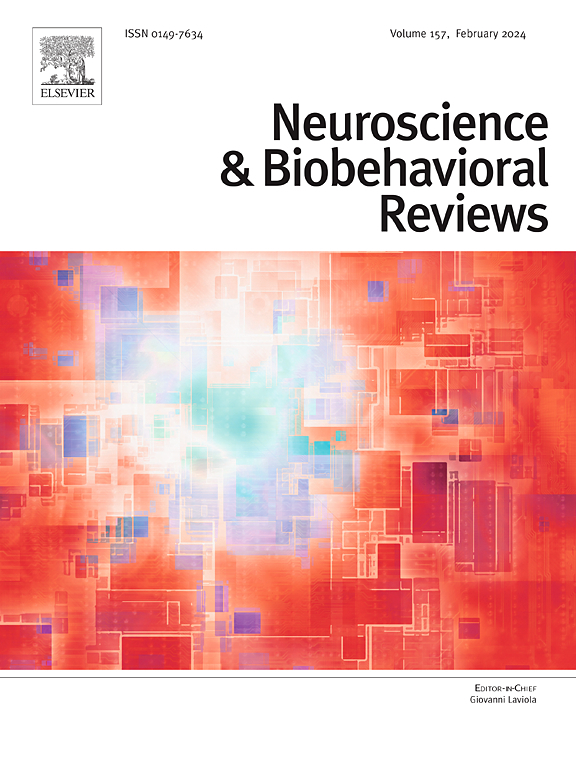The association between cannabis use and paranoia: Meta-analysis of experimental and observational studies
IF 7.5
1区 医学
Q1 BEHAVIORAL SCIENCES
引用次数: 0
Abstract
Paranoia is common and has negative implications at clinical and societal levels. Cannabis may cause paranoia, although conflicting evidence exists. We reviewed studies on the association between cannabinoid use and paranoid symptoms. PubMed was searched from inception to July 2023, seeking experimental and observational studies that measured paranoid symptoms with specific assessments. Data of 13 studies (n = 13.559 participants) were pooled using Bayesian Model-Averaged Meta-Analysis, hierarchical Bayesian meta-analyses and Robust Bayesian Meta-Analysis. Effect size measures were Standardized Mean Difference (SMD) or Odds Ratio (OR). Five experimental studies showed that participants receiving cannabinoids developed more severe paranoid symptoms than those receiving placebo (SMD = 0.47; 95 % CI, 0.13 – 0.48, Posterior Probability of Inclusion, PPI: 94 %). Studies using TCH-prevalent cannabinoids detected higher effects than those administering mixed THC-CBD or CBD- prevalent cannabinoids. In four cross-sectional studies from the general population, the odds of displaying paranoid symptoms in cannabinoid users was higher than in non-users (OR: 1.75, 95 % CI, 1.43–2.07, PPI: 99 %), with effects increasing with the percentage of males in the sample. The pooled effect was not significant in studies recruiting patients with psychiatric disorders. Results of three prospective studies also suggest that cannabis is associated with the subsequent onset of paranoid symptoms. In conclusion, converging evidence from experimental and observational studies suggest that cannabinoids are associated with, and may cause paranoid symptoms. Preventive and therapeutical actions may be warranted, considering the implications of paranoia, and the dramatic increase in cannabis use worldwide.
大麻使用与偏执之间的关系:实验和观察研究的荟萃分析。
偏执狂很常见,在临床和社会层面都有负面影响。尽管存在相互矛盾的证据,但大麻可能会导致偏执。我们回顾了大麻素使用与偏执症状之间关系的研究。PubMed检索从成立到2023年7月,寻找通过特定评估测量偏执症状的实验和观察性研究。采用贝叶斯模型平均荟萃分析、层次贝叶斯荟萃分析和稳健贝叶斯荟萃分析对13项研究(n = 13.559名参与者)的数据进行汇总。效应量测量采用标准化平均差(SMD)或优势比(or)。五项实验研究表明,接受大麻素的参与者比接受安慰剂的参与者出现更严重的偏执症状(SMD = 0.47;95% CI, 0.13 - 0.48,后验纳入概率,PPI: 94%)。使用大麻素的研究发现,与使用混合的THC-CBD或CBD-大麻素相比,使用大麻素的效果更高。在四项来自普通人群的横断面研究中,大麻素使用者表现出偏执症状的几率高于非使用者(OR: 1.75, 95% CI, 1.43 - 2.07, PPI: 99%),且影响随着样本中男性比例的增加而增加。在招募精神障碍患者的研究中,合并效应不显著。三项前瞻性研究的结果也表明,大麻与随后的偏执症状发作有关。总之,来自实验和观察性研究的证据表明,大麻素与偏执症状有关,并可能导致偏执症状。考虑到偏执的影响以及全世界大麻使用的急剧增加,可能有必要采取预防和治疗行动。
本文章由计算机程序翻译,如有差异,请以英文原文为准。
求助全文
约1分钟内获得全文
求助全文
来源期刊
CiteScore
14.20
自引率
3.70%
发文量
466
审稿时长
6 months
期刊介绍:
The official journal of the International Behavioral Neuroscience Society publishes original and significant review articles that explore the intersection between neuroscience and the study of psychological processes and behavior. The journal also welcomes articles that primarily focus on psychological processes and behavior, as long as they have relevance to one or more areas of neuroscience.

 求助内容:
求助内容: 应助结果提醒方式:
应助结果提醒方式:


